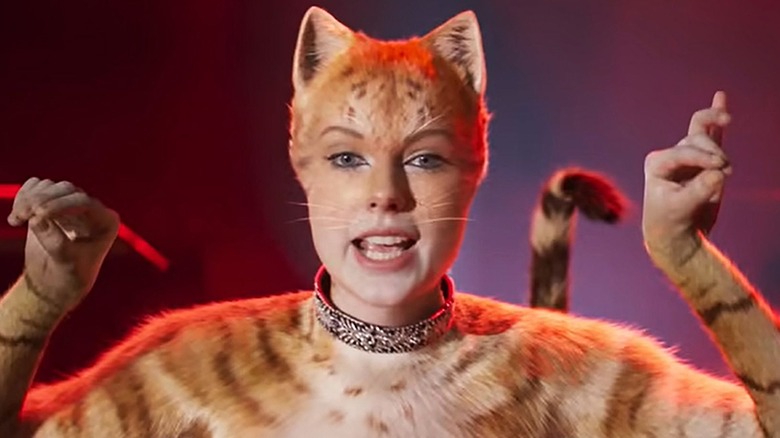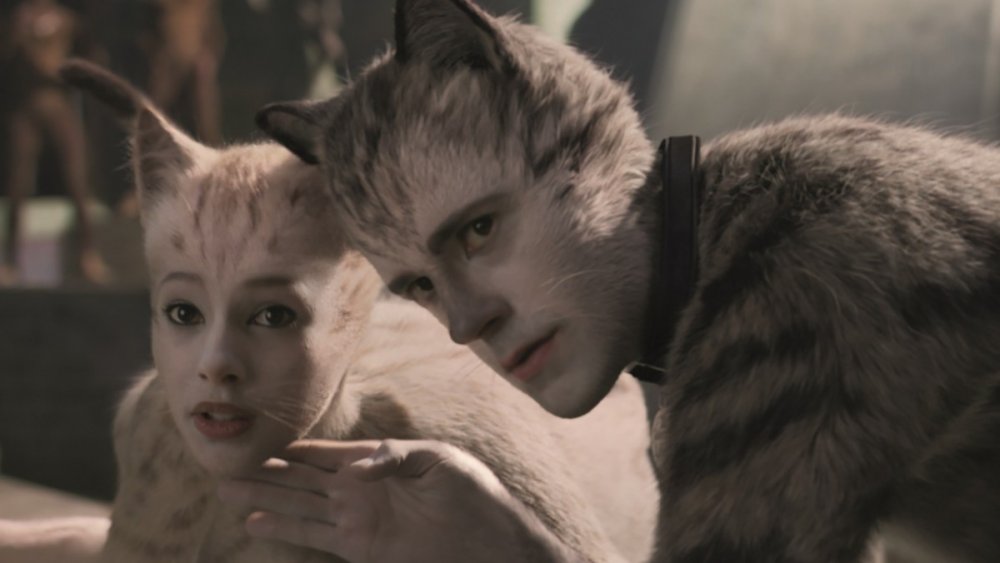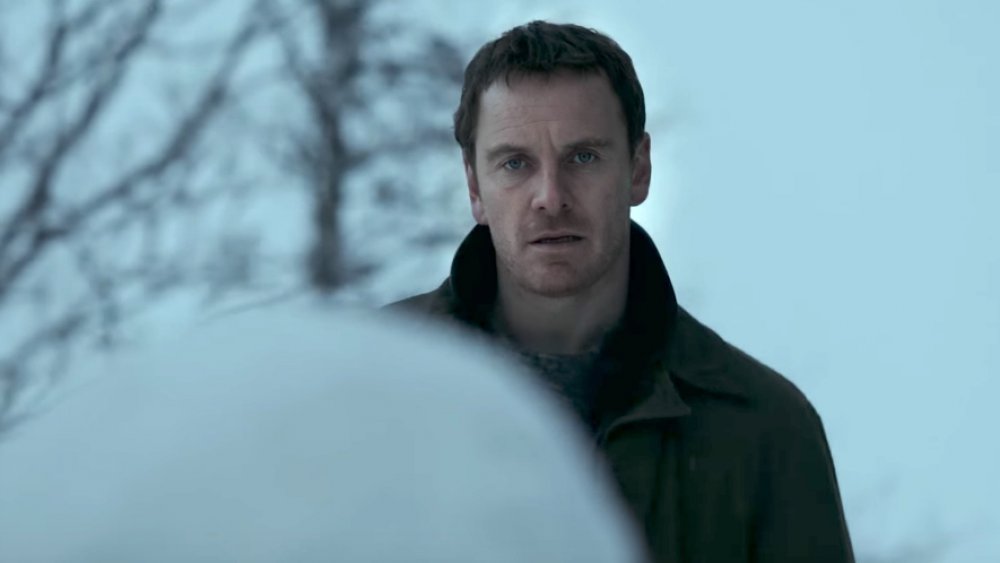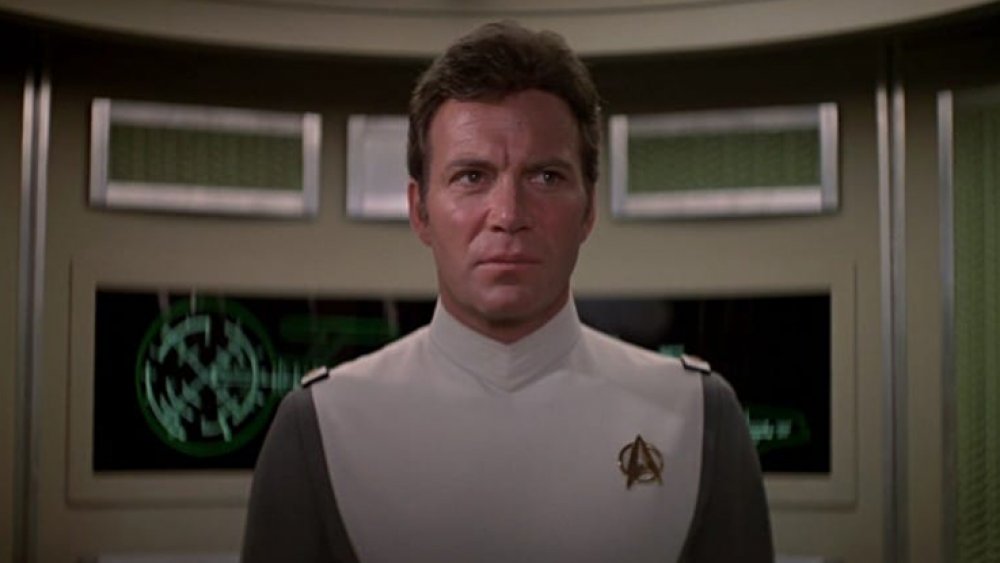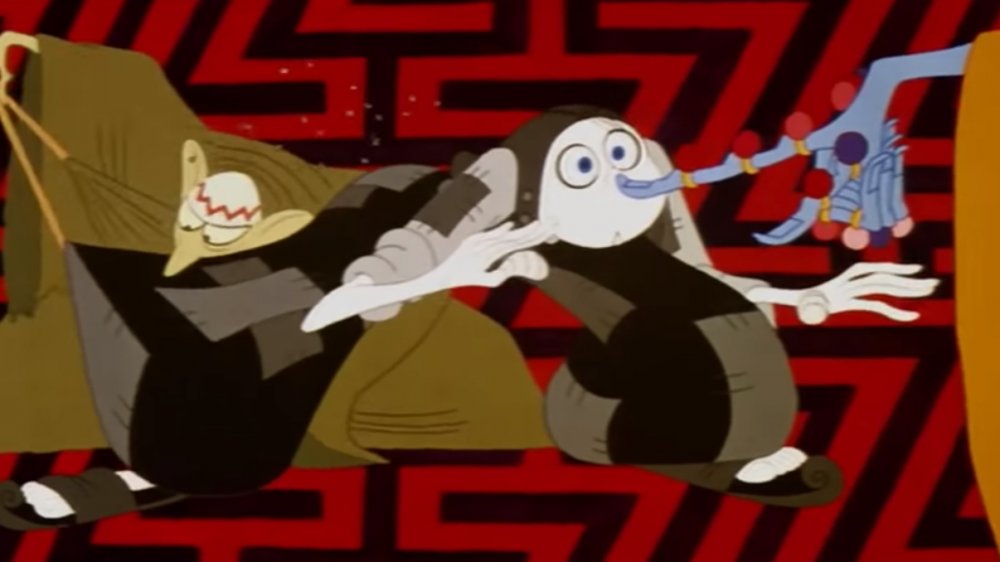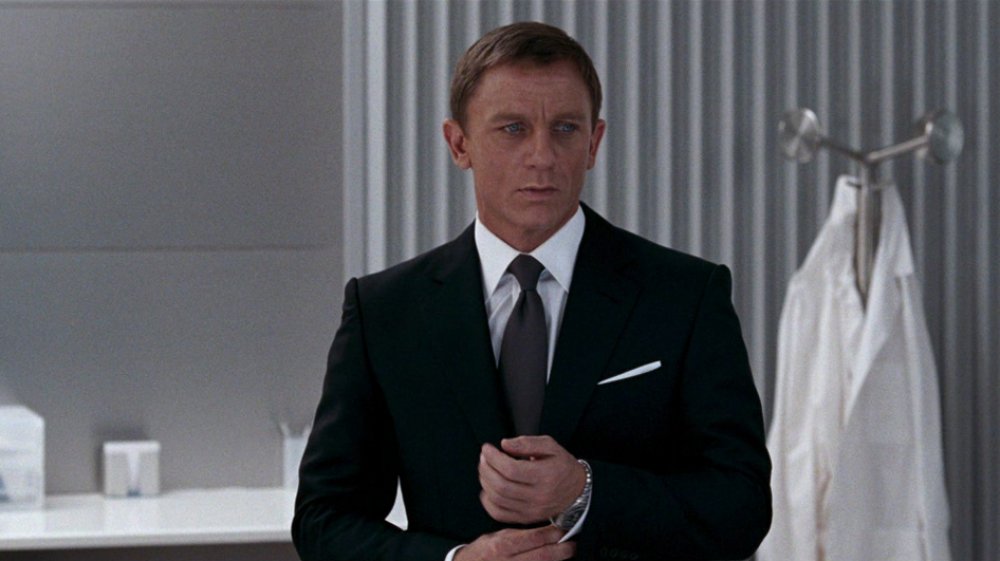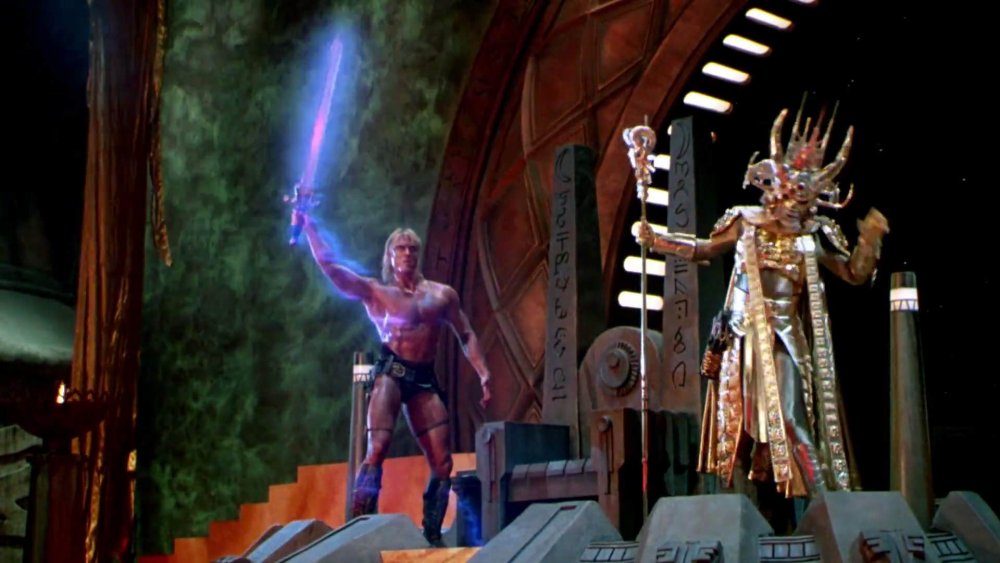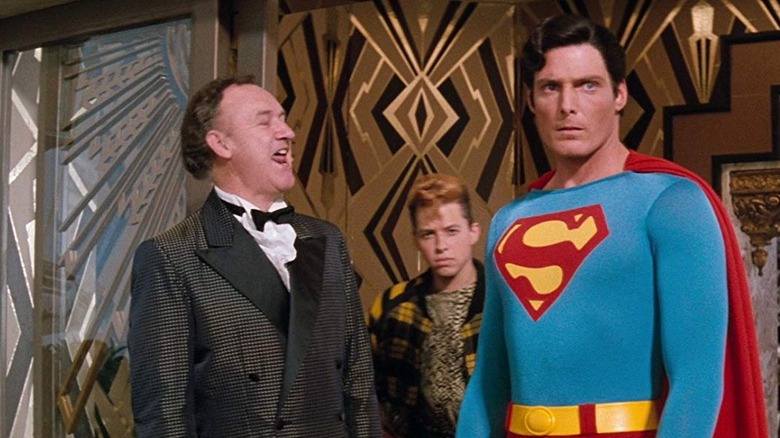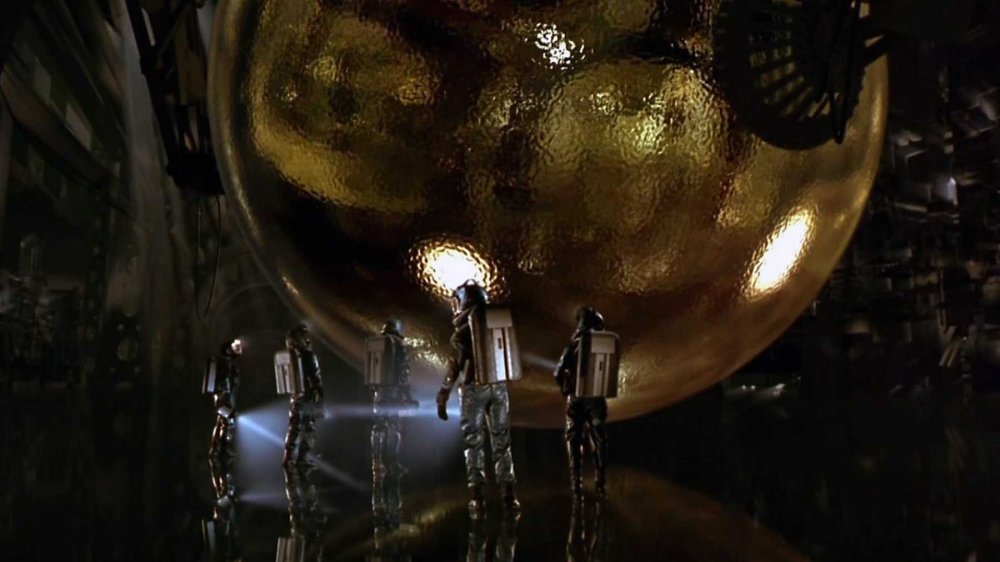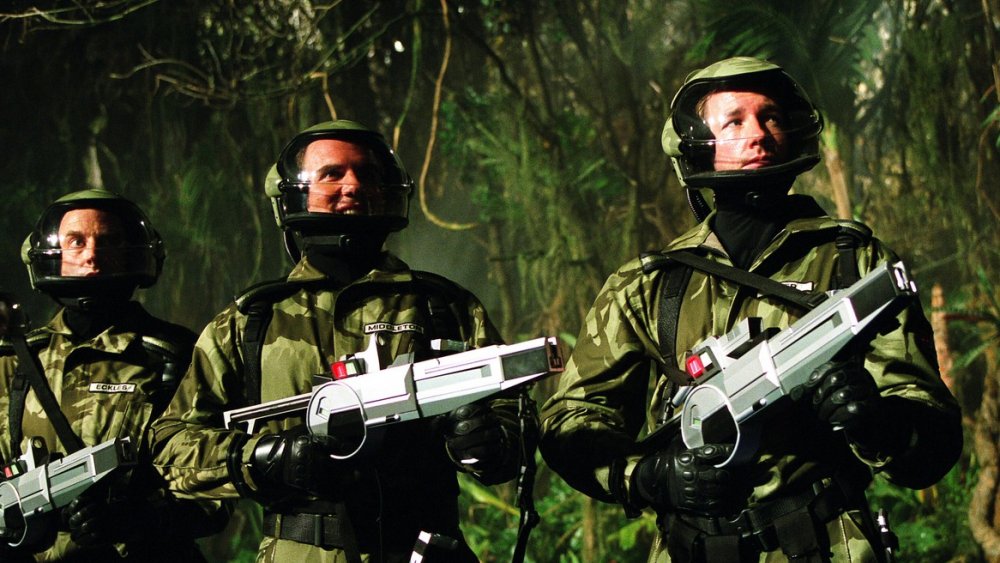Movies Rushed Into Theaters Before They Were Finished
The history of Hollywood is filled with all sorts of stories about films that were plagued by problems behind the scenes, but nonetheless managed to make it across the finish line, often due to some brilliant last-minute changes. But not all stories have such happy endings. Sometimes a movie has behind the scenes problems that the filmmakers simply can't solve, and the studio is forced to release the end result as is.
There are all sorts of reasons this might be the case. Sometimes an ambitious director attempts some bold filmmaking techniques or experimental special effects that don't end up working out. Other times the problems are more minor, but the studio controlling the purse strings just isn't willing to cough up the money for reshoots. Some of these movies are eventually re-worked for later release, while others are just set aside and forgotten.
We've all turned in some half-finished homework from time to time, so join us and see if you find it as weirdly encouraging as we do to see examples of big-budget movies that were thrown together in the last few minutes before the bell rang. Here are our favorite stories of movies that were rushed into theaters before they were finished.
Universal has to re-skin some Cats
Even under the best of circumstances, there's no world in which Cats was going to be a normal film. It's the adaptation of an '80s synth rock musical, which is itself adapted from a book of whimsical poems from the '30s. People dress as cats and dance around sexily. There's little to no plot. It was always destined to be a strange nightmare, but the disastrous visual effects made it so much weirder.
There was so much wrong with the look of Cats when it was first released. The actors' human faces never sat quite right on their incongruous kitty bodies. Their hands, typically rendered as a middle ground between hand and paw, were also sometimes inexplicably 100 percent human. According to some Reddit users who worked on the film, the motion capture data recorded on set was largely unusable, and so instead the VFX houses had to resort to rotoscope animation to cats-ify the cast. Allegedly, the director had unrealistic expectations about how this would look, especially given the unreasonable time frame the artists were given in which to work.
However, the near-universal visceral backlash against the VFX lead to an extreme rarity for a theatrical film: they patched it like a video game. The day the film opened, Universal announced they'd be sending out an updated version of Cats with "some improved visual effects." We're guessing that most of the filmmakers we're talking about here wish they could do the same.
The Snowman hits theaters half-melted
Long before The Snowman was released, the internet had already decided that everything about this allegedly spooky Scandanvian crime thriller was a complete joke. From the instantly meme-worthy line "Mister Police, you could have saved her. I gave you all the clues" to the fact that the protagonist's name was "Harry Hole," no aspect of the film escaped ridicule.
It was all a bit of light fun at the expense of a movie that most people assumed would end up being fairly competently made, if a little goofy. The mockery got an unexpected second act when the film hit theaters, and it ended up being far worse than anyone anticipated.
The plot of The Snowman sometimes just doesn't track at a fundamental level, and director Tomas Alfredson has been quite open in interviews about the reason why: they didn't have time to film the entire script. As he put it, "Our shoot time in Norway was way too short, we didn't get the whole story with us and when we started cutting we discovered that a lot was missing." Apparently, about 10-15 percent of the movie's screenplay was simply not filmed, and the production didn't have enough time or money for reshoots, so Alfredson and the rest of his team just tried to fit together the footage they had into a movie in the editing bay. Unfortunately, Mister Director, you couldn't have saved it. You didn't have all the film.
Star Trek: The Motion Picture is far from picture perfect
The announcement that Star Trek was finally getting a theatrical film was somewhat of a mixed blessing for those behind the scenes. The team was obviously thrilled for the expanded scope of story that a feature film budget would allow, but the promised release date of December 1979, just a year and a half from the announcement, seemed extremely ambitious. Everything would need to go perfectly in order to hit that deadline.
Unfortunately, things didn't go perfectly. The VFX company, Robert Abel and Associates, attempted to use some early CGI for many of the film's effects shots, but they just couldn't figure it out in time. After a year of working on the movie with nothing to show for it, Abel and Associates got the axe and special effects legend Douglas Trumball was brought in to completely re-do all the effects. In an interview with the Hollywood Reporter, Trumball said he had to do "as many shots as Star Wars and Close Encounters [of the Third Kind] combined" in six months.
Miraculously, Trumball managed to pull it off, mostly. When the film arrived in theaters, some of the effects shots were still unfinished, and for unknown reasons, some major scenes were also missing entirely. These scenes were added in when the film aired on television — one of the rare instances of a movie getting longer after being edited for TV — and the unfinished effects shots were finally fixed for the DVD release in 2001.
The Thief and the Cobbler gets stolen from its creator
One of the most tragically ill-fated films of all time, The Thief and the Cobbler was supposed to be animator Richard Williams' magnum opus. While creating it, he made some of the most beautifully nuanced animation in history, but because of this, his process was painstakingly slow. He chipped away at it, in various forms, from the 1960s through the early 1990s.
The project was ultimately picked up by Warner Bros. in 1988, but perhaps not surprisingly, Williams failed to complete the film before his deadline, so the completion bond company seized control and hired producer and director Fred Calvert to finish it. Some higher-ups must have also lost their appetite for Williams' sensibilities at this point, because Calvert's additions, in addition to being of a much lower animation quality, attempted to transform this masterpiece of psychedelia into a more traditional Disney-style family musical. A completely butchered version, renamed The Princess and the Cobbler, was released in 1993, and a later, somewhat revised version of the film known as Arabian Knight got a wider release in 1995. Both were total flops.
Though it never achieved mainstream success, The Thief and the Cobbler did become an underground sensation among animation enthusiasts. Filmmaker Garret Gilchrist even created a fan restoration of Williams' original vision for the film, which he dubbed The Thief and the Cobbler: The Recobbled Cut.
Quantum of Solace gives Bond a license... to write?
When Casino Royale premiered in 2006, it was a bold statement that James Bond was back and better than ever. When audiences went to see the follow-up film, Quantum of Solace, they were expecting more of the same, but the response was comparatively lukewarm — the 65 percent score on Rotten Tomatoes was a pretty big drop from Casino Royale's 95 percent. So what happened?
Quantum of Solace was developed at an unfortunate time in Hollywood. Shortly before production was scheduled to begin, the 2007-08 Writers Guild of America strike hit. According to actor Daniel Craig, "We had the bare bones of a script... and there was nothing we could do. We couldn't employ a writer to finish it." In the end, Craig and director Marc Forster ended up writing a chunk of the script themselves. "There was me trying to rewrite scenes — and a writer I am not," Craig recalled. "The rules were that you couldn't employ anyone as a writer, but the actor and director could work on scenes together... We got away with it, but only just."
Watching the film with this in mind, it's clear why it feels so inconsequential. There are a few important events that occur, but the runtime in between is padded with wordless action scenes and forgettable filler. The end result feels very much like you're watching the idea of a movie rather than an actual film.
Masters of the Universe gets brought down to Earth
Throughout all stages of production, director Gary Goddard's vision for Masters of the Universe was crushed under the weight of budget constraints. In order to save money on special effects, He-Man was relocated from his usual fantasy world of Eternia to modern-day Earth, and the characters of Orko and Battle Cat had to be cut entirely. But the final blow to Goddard's ambitions came as he was about to shoot the epic final showdown between He-Man and Skeletor. Meticulously storyboarded and taking place across an enormous castle set that spanned two soundstages, the sequence had a chance to be, in Goddard's words, "the greatest swordfight ever put on film."
Before he could start filming, due to yet more concerns about production costs, Goddard got a call from the production company stating that "this would be the last day of the shoot." He managed to film a bit of the fight scene as planned, but then the plug was pulled, and the majority of the sequence remained unfilmed. Goddard eventually convinced the producers to part with a little more money to finish the movie, but had to severely cut down on his ambition for the climax and shoot on a much smaller set. In the finished film, the final act does include a few bits from the original sequence as Goddard initially planned it, but most of the fight takes place on the newer, mostly dark and empty set, and the difference is quality is quite noticeable.
Superman IV: The Quest for a Budget
In 1978, Superman: The Movie was a genuine cultural phenomenon. Superman II was similarly well-received, but the series started sputtering with Superman III, which was widely hated for plunging into slapstick and goofy side characters.
Superman IV: The Quest for Peace was, in part, an attempt to get the franchise back on track with a more serious sequel, but those efforts were undermined when the budget was severely slashed. In his biography, Superman actor Christopher Reeve wrote about a scene in which his character walks down 42nd Street in New York on his way to give a speech at the United Nations. "If that had been a scene in Superman I, we would actually have shot it on 42nd Street," he imagined. "Instead, we had to shoot at an industrial park in England in the rain with about a hundred extras, not a car in sight, and a dozen pigeons thrown in for atmosphere."
In a Q & A video, Jon Cryer, who played Lenny Luthor, was even more scathing when reflecting on the film. "The movie is not finished," he asserted. "There's effects shots that don't make any sense, there's huge scenes missing. I swear, in the original script, it made more sense."
Superman III and Superman IV were both failures, but in very different ways. Superman III is fun to pick on. Superman IV is a tragedy. It's just plain depressing to see this once-great character stuck in a clearly doomed low-rent production.
Sphere could have used another round of edits
Sphere tells the story of a research team that discovers a mysterious ancient spacecraft on the ocean floor. Once the team gets inside, strange sea monsters start appearing outside, and the researchers need to unravel the mystery of this craft before the monsters get them.
It's an intriguing premise, but the studio wasn't satisfied with the initial end results. Warner Bros. ordered reshoots, and according to Dustin Hoffman on the film's DVD audio commentary, what director Barry Levinson ended up reshooting was a huge amount of additional dialogue which allegedly helped deepen and humanize the characters. Unfortunately, most of this additional footage never made it into the film — apparently, Levinson didn't have enough time to figure out what he wanted to do with all this additional footage before the picture had to be locked.
But as proof that this movie could have worked if Levinson had more time, it's arguable that we eventually did get a pair of science fiction mystery films that were pretty much everything Sphere was trying to be — 2016's Arrival and 2018's Annihilation. Perhaps there's a film like that sitting somewhere in Sphere's raw footage, still waiting to be assembled.
A Sound of Thunder gets called on account of rain
On paper, A Sound of Thunder has a great deal of potential. It's adapted from a short story by Ray Bradbury, for starters, and it stars Ben Kingsley and Pierce Brosnan. But the making of the film a total disaster at pretty much every stage. The first director hired, Renny Harlin, was replaced by Peter Hyams. Then several of the film sets in Prague were destroyed by flooding, and the reconstruction costs ate up a huge portion of the film's budget.
In the end, money was so tight that the filmmakers couldn't even afford to finish the special effects. Contractually obligated to release it anyway, the studio pushed the film out the door as it was, using low poly CGI animatics mixed into the final film instead of finished shots, resulting in one of the most laughably unfinished-looking theatrical films of all time.
To be fair, some people aren't totally sure if the lost sets are entirely responsible for where the film's budget went. Franchise Pictures, the production company — which has since gone bankrupt — has been accused of some suspicious accounting practices, sued by the German filmmaking company, and investigated by the FBI for fraudulently padding its film's budgets to scam investors.
